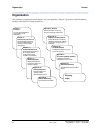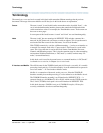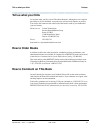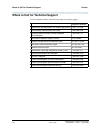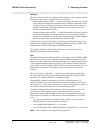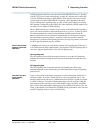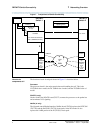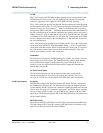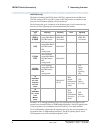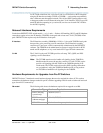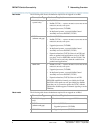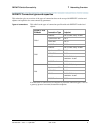
DEFINITY Switch Connectivity 1 Networking Overview
Administration for Network Connectivity
CID: 77730 555-233-504 — Issue 1 — April 2000
2
Networks
When two or more switches are connected via tie trunks, they form a private network.
There are two basic types of networks for Lucent switches:
• Main-satellite/tributary (MS/T) — A network of switches in which a main switch
is fully functional and provides attendants and CO trunks for connected satellite
switches. Tributary switches are connected to the main and may have their own
attendant and CO trunks. The main switch may be connected to one or more
Electronic tandem networks (ETNs).
• Electronic tandem network (ETN) — A wide-area network of switches in which a
call can tandem through one or more switches on its way from the originating
switch to the destination switch. ETNs have a uniform dial plan (UDP), automatic
alternate routing (AAR), and automatic route selection (ARS).
AT&T provides a service called software-defined network (SDN) that allows you to
build a private network through the AT&T public network facilities. An ETN can be
combined with an SDN to form a hybrid (ETN/SDN) network.
The switches in MS/T or ETN networks need to be provisioned with special
DEFINITY networking software packages.
DCS
Distributed Communications System (DCS) is a messaging overlay for ETN or MS/T
networks. The overlay provides signaling connections between network nodes that
enable certain key call features to operate transparently across the DCS network. That
is, the transparent features appear to operate as if the switches in the DCS network
were a single switch. For example, the DCS Call Coverage feature enables calls to an
extension on one switch to be covered by extensions on a remote switch in the
network.
DCS consists of two components — routing and message signaling. Routing the
message requires one of several networking software packages. Typically, UDP is
used singe it is included with DCS at no additional charge.
Although DCS is actually a messaging overlay for an existing network, it is
commonly thought of as a type of network itself. In this document, we will refer to
DCS in this way — DCS network will refer to a cluster of switches that are part of an
existing ETN or MS/T network and are also administered for DCS.
In addition to the normal tie-trunk connections for the transmission of voice and
call-control data, DCS requires a special signaling connection to carry the
information needed to make the DCS features work. This signaling connection, or
link, between two switches in a DCS network can be implemented in one of three
ways:
• over a processor interface (PI) channel (on the si model) or a packet gateway
(PGATE) channel (r model) using the X.25 protocol
• over an ISDN-PRI D-channel (csi, si, or r models)
• over a TCP/IP (either PPP or 10Base-T Ethernet) connection (csi, si, or r models)
Note: The csi model does not support X.25 connections.



